10 Best Chat Widgets for Websites in 2025: Features, Pros & Best Picks



Chat widgets in 2025 go beyond live chat they blend AI, automation, and multi-channel support to meet modern customer expectations. YourGPT leads with AI-powered chat, voice automation, and real-time data training. Platforms like Tidio and Freshdesk offer strong free options for small teams, while Intercom, Ada, and Zendesk cater to enterprises needing scale and analytics. Choosing the right widget depends on goals, integrations, and how deeply you want AI in your support and sales process.
Every day, more people turn to the internet to shop, learn, and make decisions. A website chatbot makes the experience easier by giving visitors quick answers and real support right when they need it.
A website chatbot does exactly that. It greets visitors, answers their questions, and guides them through your products or services, making the overall experience simple and personal.
For customers, it provides quick help without waiting for email replies or searching through long FAQ pages. According to Zendesk, 41% of consumers prefer live chat over phone or email because it gives them immediate support (Zendesk CX Trends Report).
For business, it creates opportunities to guide customers, provide support, capture leads, and increase sales.
In this blog, we cover what chat widgets are, how they meet customer expectations in 2025, and the 10 best chat widgets for websites this year. We also include a comparison table, customization tips, and a step-by-step installation guide to help you choose the right AI chat widget or live chat solution for your business.

A chat widget is a tool that adds real-time messaging to your website. Instead of sending an email or filling out a form, visitors can type a question and get an answer right away.
For businesses, chat widgets improve customer service and create more opportunities to convert visitors into paying customers. They are commonly used on eCommerce stores to handle shipping questions, on SaaS websites for product support, and on service-based sites for booking or inquiries.
There are three main types of chat widgets:
Chat widget makes your website more interactive and responsive, giving customers the quick help they expect in 2025.
Customer expectations have grown higher each year. In 2025, people want speed, personalization, and consistent service no matter where they connect with your business. Here is what customers expect today and how chat widgets help deliver it:
1. 24/7 availability
Customers shop and browse at all times. According to Salesforce, 64% of consumers expect brands to offer 24/7 support. AI chat widgets make this possible by answering questions and guiding users even when no staff are available.
2. Fast responses
Speed matters more than ever. A HubSpot survey found that 79% of customers rate quick replies as the top factor in a positive support experience. Chat widgets cut waiting time from hours to seconds by answering instantly or routing to the right person.
3. Personalized interactions
Shoppers want answers tailored to their needs, not generic responses. With CRM or order history connected, chat widgets can suggest the right product, share delivery updates, or follow up with relevant offers. This makes the conversation feel personal and helpful.
4. Proactive outreach
Instead of waiting for customers to ask, modern chat widgets can start the conversation. For example, an online store can send a message like “Need help checking out?” if someone lingers on the cart page. These nudges reduce cart abandonment and increase conversions.
5. Consistency across channels
Customers now move between websites, mobile apps, and social platforms. They expect the same smooth experience everywhere. Advanced chat widgets integrate across WhatsApp, Messenger, Instagram, and email, so conversations continue without starting over.
6. Trust and transparency
Alongside speed and personalization, customers also care about data privacy. Being clear about how data is used and ensuring compliance with standards like GDPR builds trust and makes users feel safe when chatting with AI-powered widgets.
| Plugin name | Best for |
|---|---|
| YourGPT | AI-first chat and voice with multi-channel support |
| Intercom | SaaS and enterprises needing data-rich engagement |
| Ada | Enterprise automation and large-scale ticket deflection |
| Zendesk Chat | Teams already on Zendesk for support workflows |
| Freshdesk Messaging | SMBs wanting quick AI setup and multi-channel chat |
| Tidio | Small ecommerce stores with cart recovery |
| LiveChat | Reliable live chat with strong ecommerce integrations |
| HubSpot Chat | Inbound teams on HubSpot CRM for lead capture |
| Voiceflow | Teams building chat and voice experiences together |
| Landbot | No-code funnels and lead-gen conversations |
There are dozens of chat widgets available, but not all deliver the same results. For this list, we evaluated platforms based on AI capabilities, ease of use, integrations, affordability, and business impact in 2025. The 10 below stand out as the most reliable options across industries and company sizes.
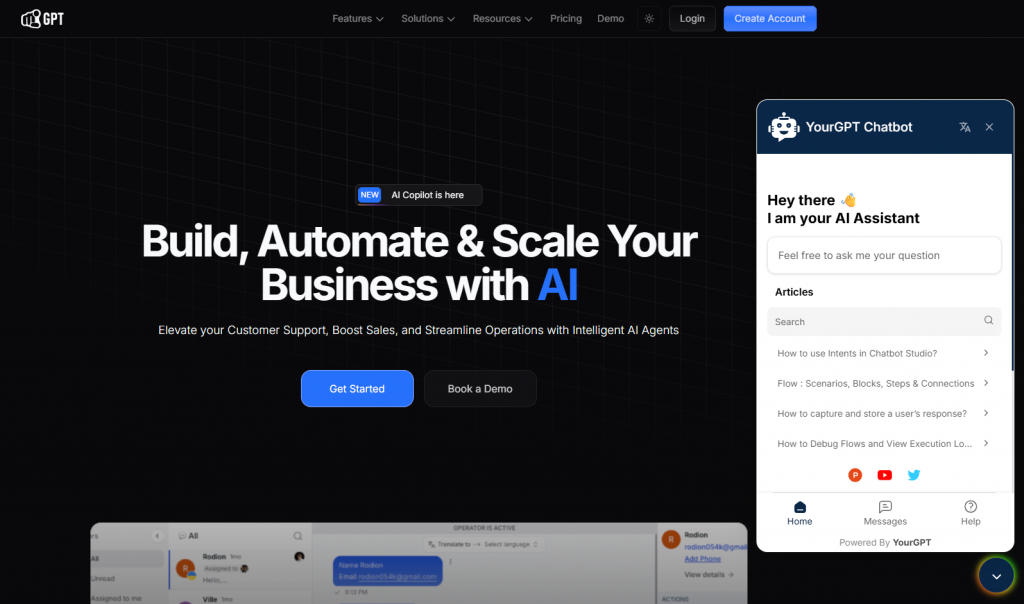
YourGPT is an AI-first platform built for businesses that want to do more than just live chat. It combines AI chatbots, voice automation, and multi-channel messaging, making it a complete solution for support, sales, and operations.
Why it stands out: Unlike most widgets, YourGPT is highly customisable, It provides and advanced AI that can be train on your own data (PDFs, websites, driven, more).
Businesses that want one AI-powered platform for multi-channel customer engagement.
Reduces support costs, scalable across departments, true AI + voice capabilities.
Free Trial is limited to 7 days.
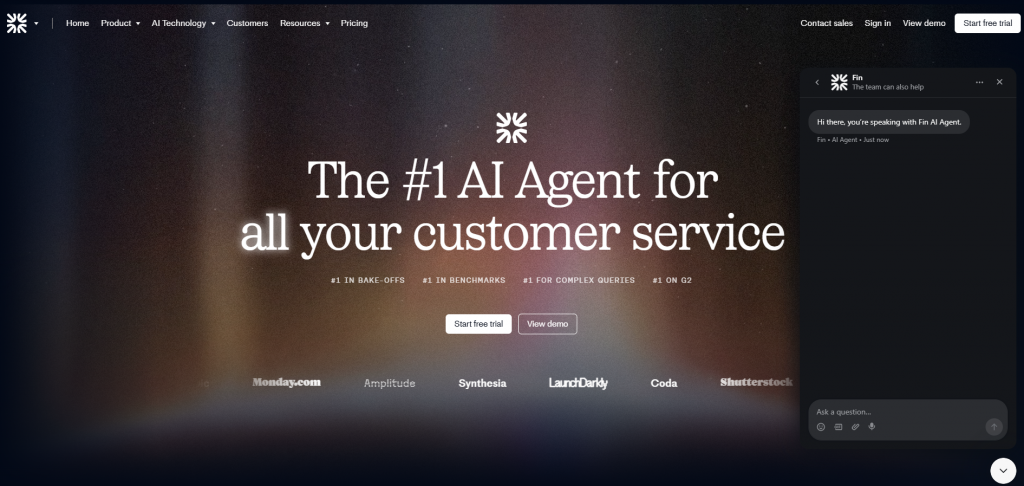
Intercom is a popular tool in customer communication for SaaS and enterprise businesses. It blends live chat, automation, and product integrations to support customer engagement at scale.
Why it stands out: Its AI assistant “Fin” improves efficiency by handling FAQs, while its analytics help businesses optimize onboarding and support workflows.
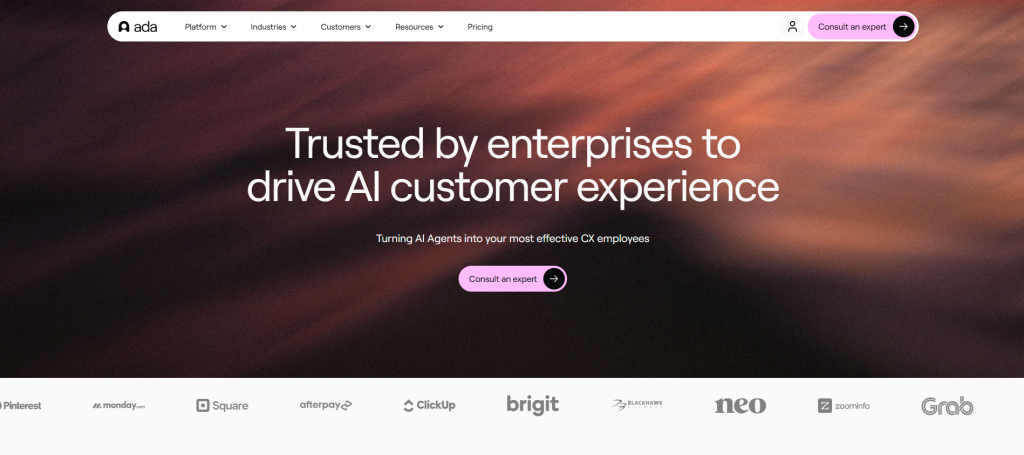
Ada is designed for enterprises that want to automate support at scale. With strong natural language processing, Ada reduces reliance on large agent teams.
Why it stands out: Ada is known for high-volume ticket deflection, helping global companies manage customer conversations efficiently.

Zendesk Chat is part of the Zendesk customer service suite. It’s a natural choice for companies already using Zendesk’s ticketing and helpdesk tools.
Why it stands out: Tight integration with Zendesk’s system ensures agents have full customer histories at their fingertips.

Freshdesk Messaging is part of the Freshworks platform and focuses on simplicity and affordability. It helps small and mid-sized businesses adopt AI-powered chat quickly.
Why it stands out: The built-in AI bot “Freddy” makes automation accessible without complex setup.
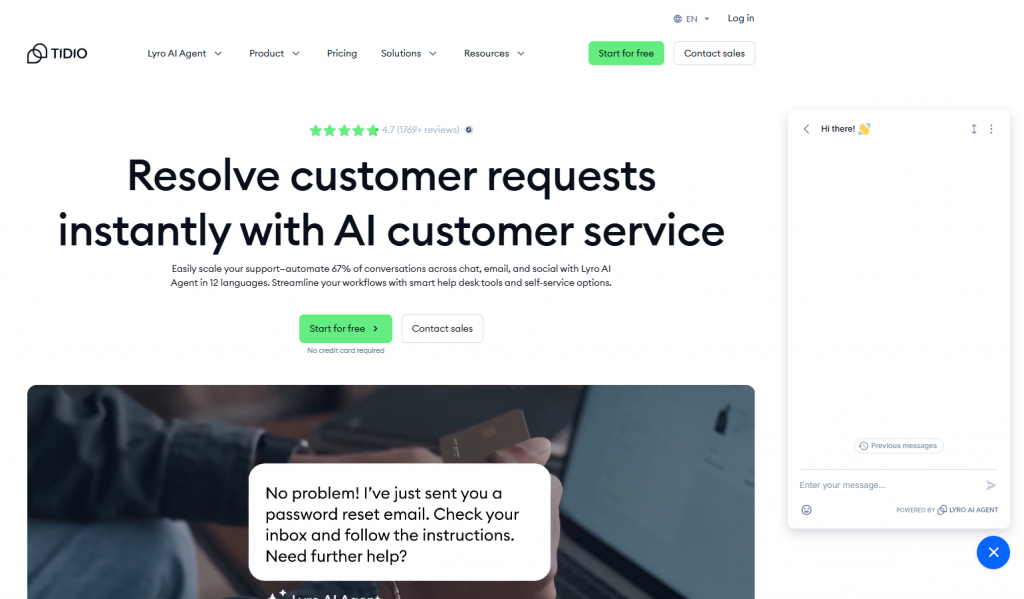
Tidio is one of the most popular chat widgets for small businesses and eCommerce stores. It combines live chat with automation in an affordable package.
Why it stands out: Its free plan and Shopify integration make it a go-to choice for online retailers.
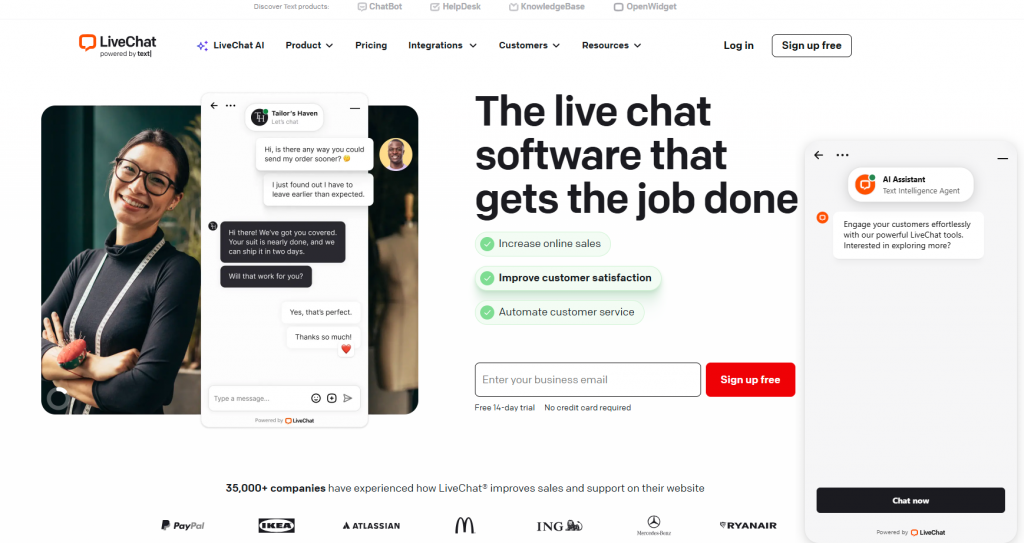
LiveChat is one of the most established providers in the space, known for reliability and strong eCommerce integrations.
Why it stands out: It offers stable performance and customization for businesses that want a proven solution.
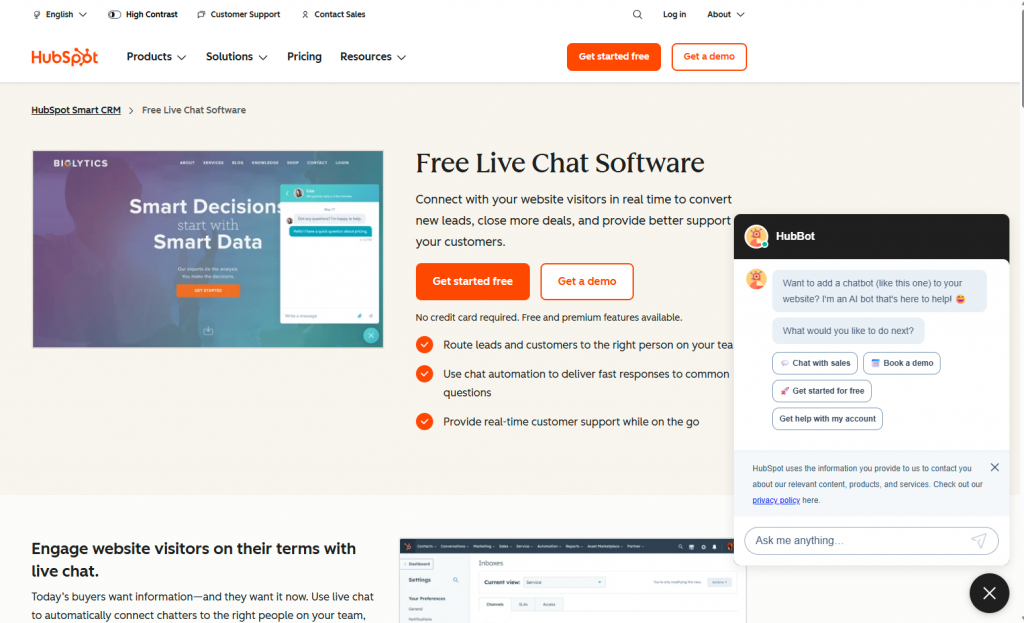
HubSpot Chat is a natural fit for businesses already using HubSpot CRM. It captures leads and nurtures them within HubSpot’s ecosystem.
Why it stands out: Seamless integration with HubSpot CRM makes it powerful for inbound marketing teams.
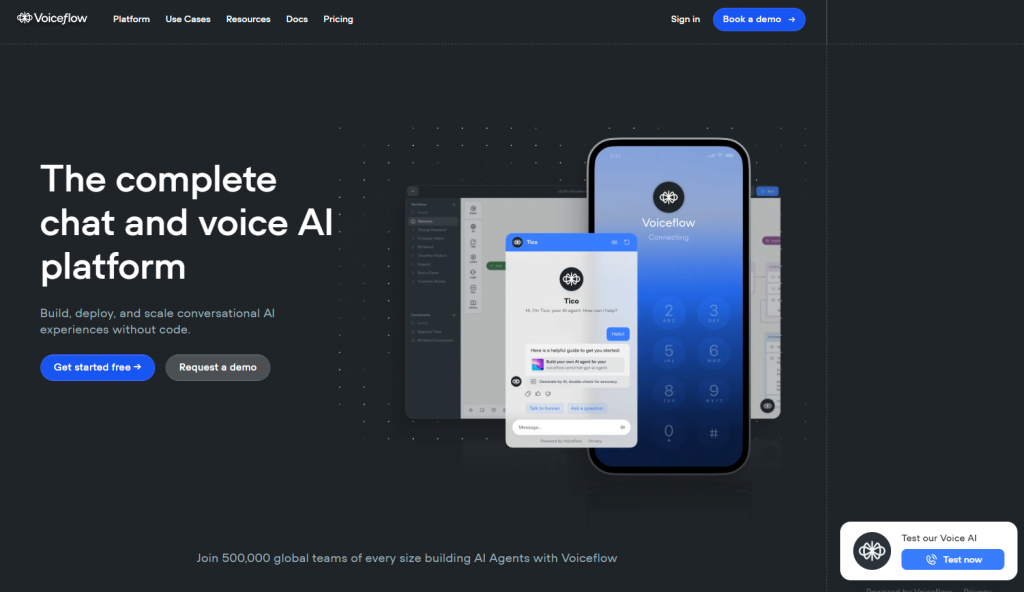
Voiceflow is unique in focusing on both chat and voice bot design. It’s often used for prototyping and building multi-modal customer experiences.
Why it stands out: It bridges the gap between voice AI and chatbots, giving companies flexibility.
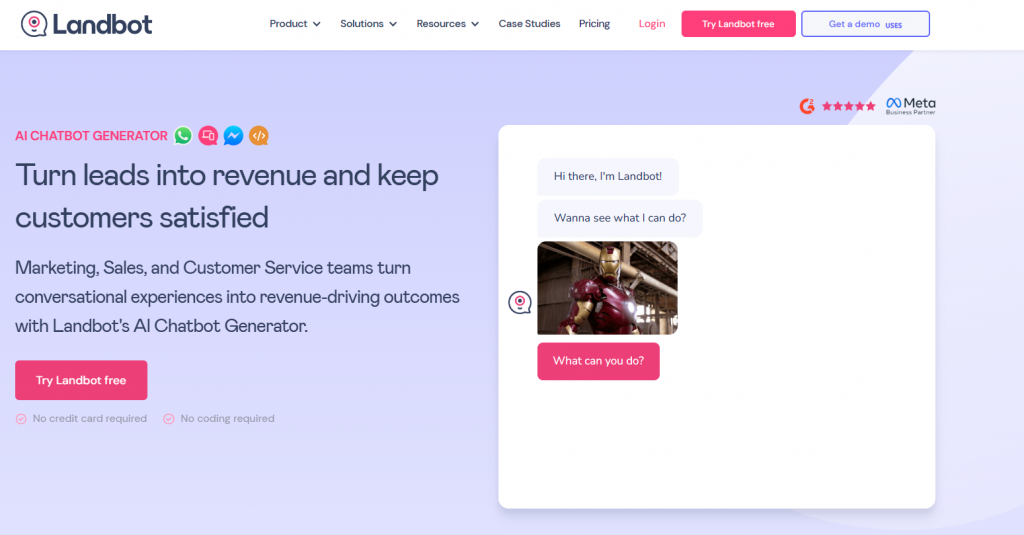
Landbot is a no-code chatbot builder that excels at creating engaging conversation flows, especially for marketing and lead generation.
Why it stands out: Its drag-and-drop interface lets marketers design personalized chat experiences without developers.
The table below compares the top 10 website chat widgets for 2025 by their core features, best use cases, integration options, and pricing to help you identify the right solution for your business.
Customizing a chat widget is about making it fit your brand while improving the visitor’s experience. A well-designed widget builds trust, increases engagement, and makes it easier for customers to get help.
When you do it well, a chat widget turns into more than just support. It becomes a reliable channel for engagement and growth.
Adding a chat widget to your website with YourGPT is quick and straightforward. Once installed, it allows you to engage visitors, answer questions, and capture leads in real time. Follow these steps to set it up:
Visit the YourGPT login page and sign up for an account. This gives you access to the dashboard where you can build, customize, and manage your chat widget.

From your training dashboard, you can upload your business content such as FAQs, documents, or website links. This training step ensures the widget can provide accurate, context-aware answers to your visitors.

Adjust the appearance to match your brand. Choose colors, fonts, and chat bubble styles, and set a welcome message that reflects your tone of voice.

In the Integration section of the dashboard, click to create your widget script. This short piece of code connects YourGPT to your website.

Copy and paste the script into your site’s <head> section. This works with platforms like WordPress, Shopify, Wix, Webflow, Squarespace, or any custom HTML site.

Save your changes and refresh your site. Open the chat widget and test it by asking common customer questions or running through typical scenarios such as checkout or bookings.
Your YourGPT chat widget is now live and ready to support your customers.
To get real value from a chat widget, you need more than setup. The way you manage and improve it over time determines how well it supports customers and drives results.
1. Proactive, but Timed Right
Trigger chat only when it helps—such as during checkout or after a long pause on a page. Poorly timed prompts can frustrate visitors, while well-placed ones increase conversions.
2. Smooth AI-to-Human Handoff
Set clear rules for when conversations should shift from AI to a live agent. For example, if a visitor asks about billing or provides feedback, route it directly to a human. This prevents frustration and builds trust.
3. Track and Refine
Regularly measure chat metrics like engagement, resolution time, and customer satisfaction. Use A/B testing on greetings, triggers, or chat flows to find what works best and remove what doesn’t.
4. Prioritize Accessibility
Keep your widget usable for everyone. Review it often to make sure colors have contrast, text is readable, and screen readers work correctly. For global audiences, update language support as customer needs evolve.
5. Be Transparent with Data
Show customers how their information is collected and used. Add consent prompts or privacy notices to make the chat feel safe and trustworthy.
Tidio and Freshdesk provide strong free plans. YourGPT also offers demos and trials with advanced AI features for testing before upgrading.
Yes. Most leading platforms, including YourGPT, Tidio, and LiveChat, integrate smoothly with WordPress, Shopify, Wix, and other site builders.
Yes. Tools like YourGPT, Intercom, and Tidio let you set up multilingual chat flows so global visitors get help in their own language.
YourGPT, Ada, Intercom, and Tidio include AI features that answer FAQs, guide users, and reduce the need for human agents.
Modern widgets are lightweight and designed not to affect page speed. Always test load time after installation and avoid stacking multiple widgets.
Yes. You can change colors, fonts, logos, and chat bubble style. Platforms like YourGPT and Landbot also let you customize welcome messages and flows.
They answer product questions, show shipping info, send discount codes, and remind visitors about abandoned carts. This often increases sales and reduces cart drop-offs.
Reputable tools follow GDPR and other privacy laws. Many, including YourGPT and Zendesk, provide encryption and options for consent messages inside the widget.
Track key metrics like response time, number of chats started, resolution rate, and customer satisfaction scores. Most platforms provide built-in analytics dashboards.
Yes. Even a small store can use a free or low-cost widget to answer common questions, capture leads, and provide quick customer support without needing a full team.
In 2025, chat widgets are a central part of customer experience. They provide instant answers, guide visitors through decisions, and support teams by handling common queries. Businesses can choose from a wide range of options, from free tools like Tidio and Freshdesk to advanced platforms such as YourGPT, which brings chat, voice, and multi-channel support together in one system.
The right platform depends on your goals. YourGPT is well suited for companies that want a single solution for support, sales, and operations.
Whichever tool you use, three practices matter most: customise the widget to match your brand, measure results through response time and satisfaction, and the response of AI. With the right setup, a chat widget becomes more than a support channel. It builds trust, increases conversions, and strengthens long-term loyalty.
Compare features, pricing, and best use cases in one place. See which chat widget fits your goals for support, sales, and growth, then launch fast with an AI chatbot that runs 24/7.
Full access for 7 days · No credit card required · Cancel anytime
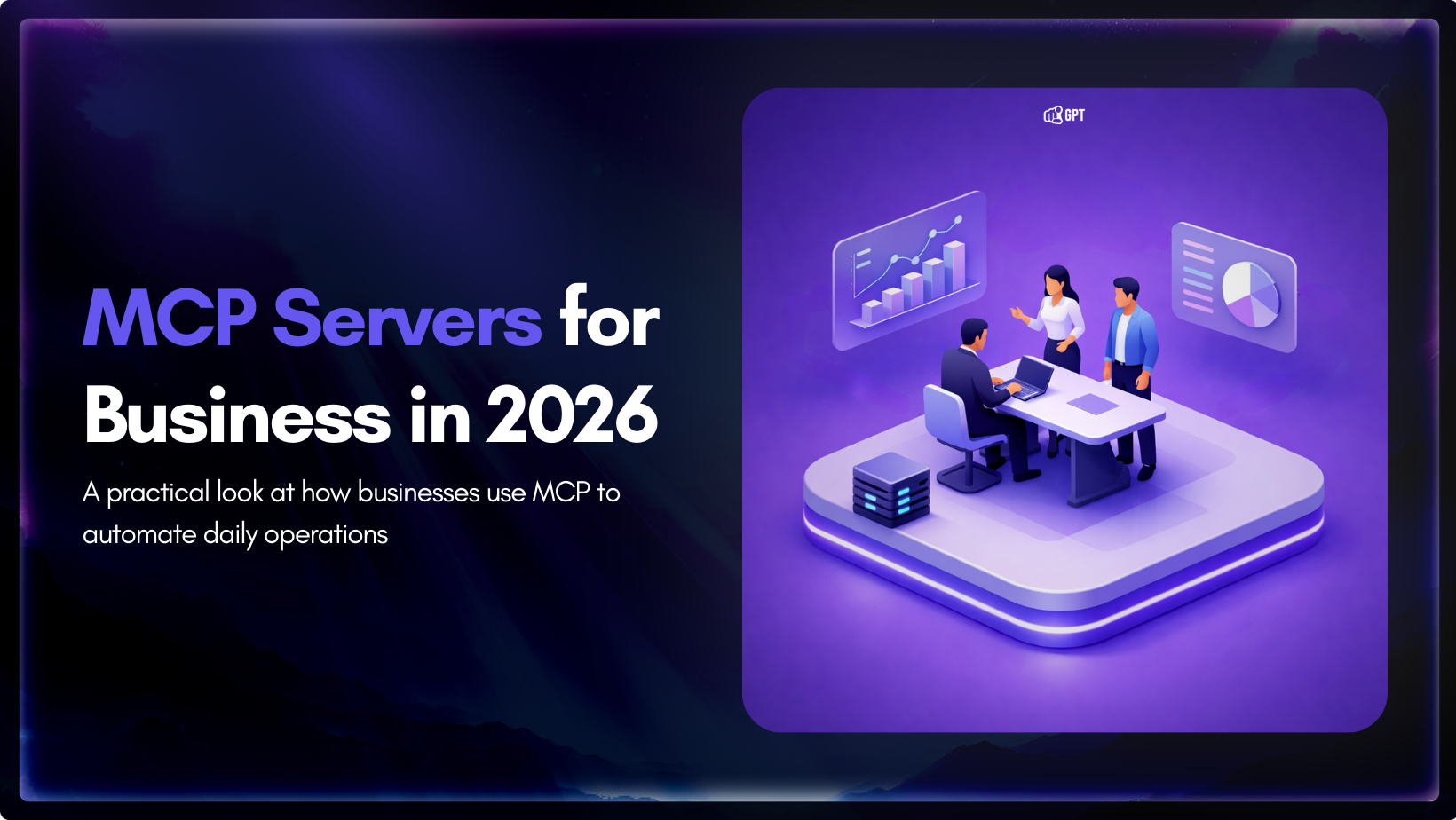
Growth-focused teams move faster when their tools work together instead of competing for attention. Modern development depends on multiple systems to ship code, review changes, monitor services, and access data. Each system serves a purpose, but routine work often means moving between dashboards, scripts, and internal tools. These small transitions shape how consistently a team […]

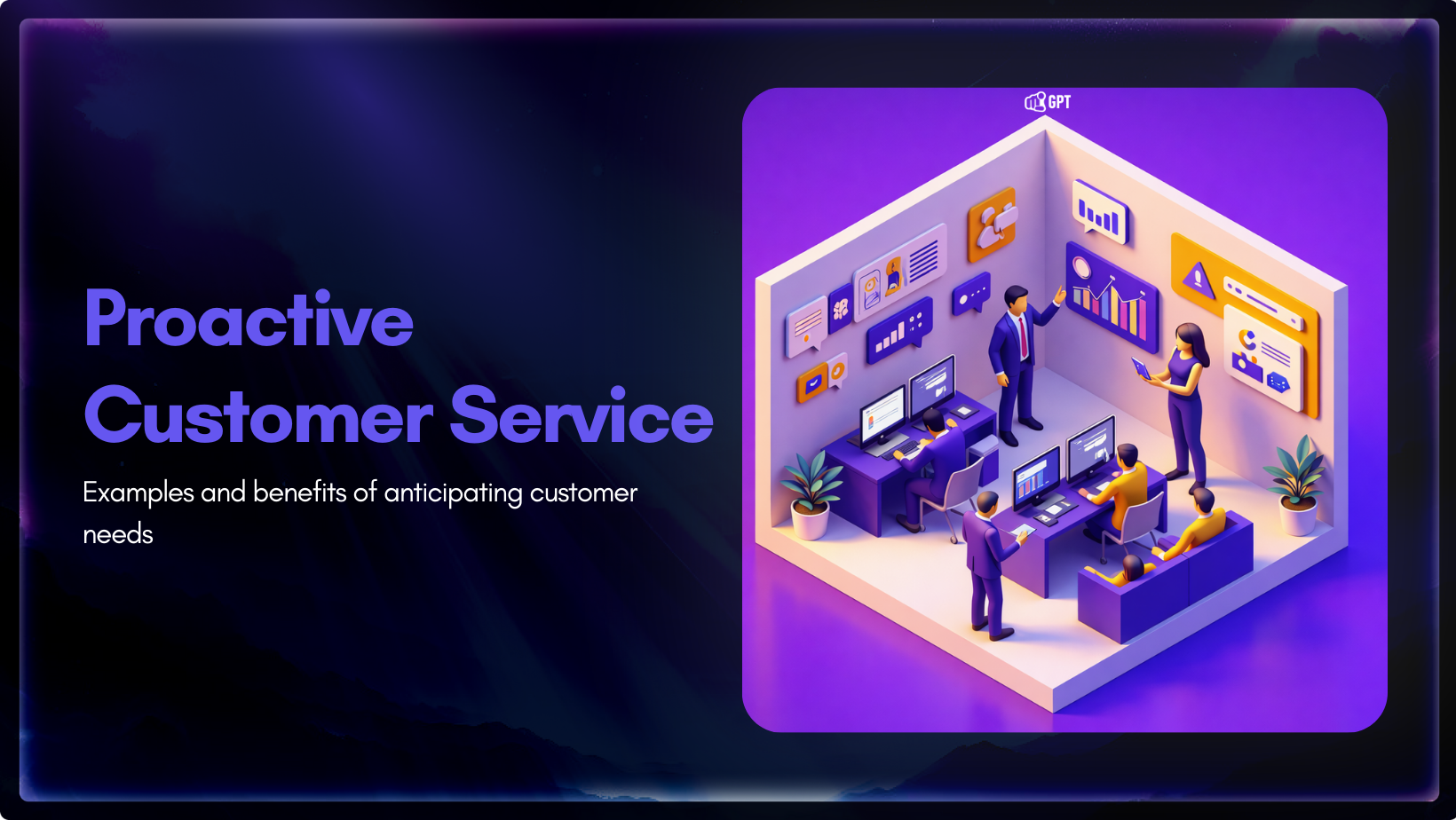
Most customer service moments begin long before a ticket is created. Something feels off. A payment does not go through. A delivery update stops moving. A user gets stuck at the same step and tries again. Customers usually pause, check, retry, and wait before they decide to ask for help. Proactive customer service works inside […]

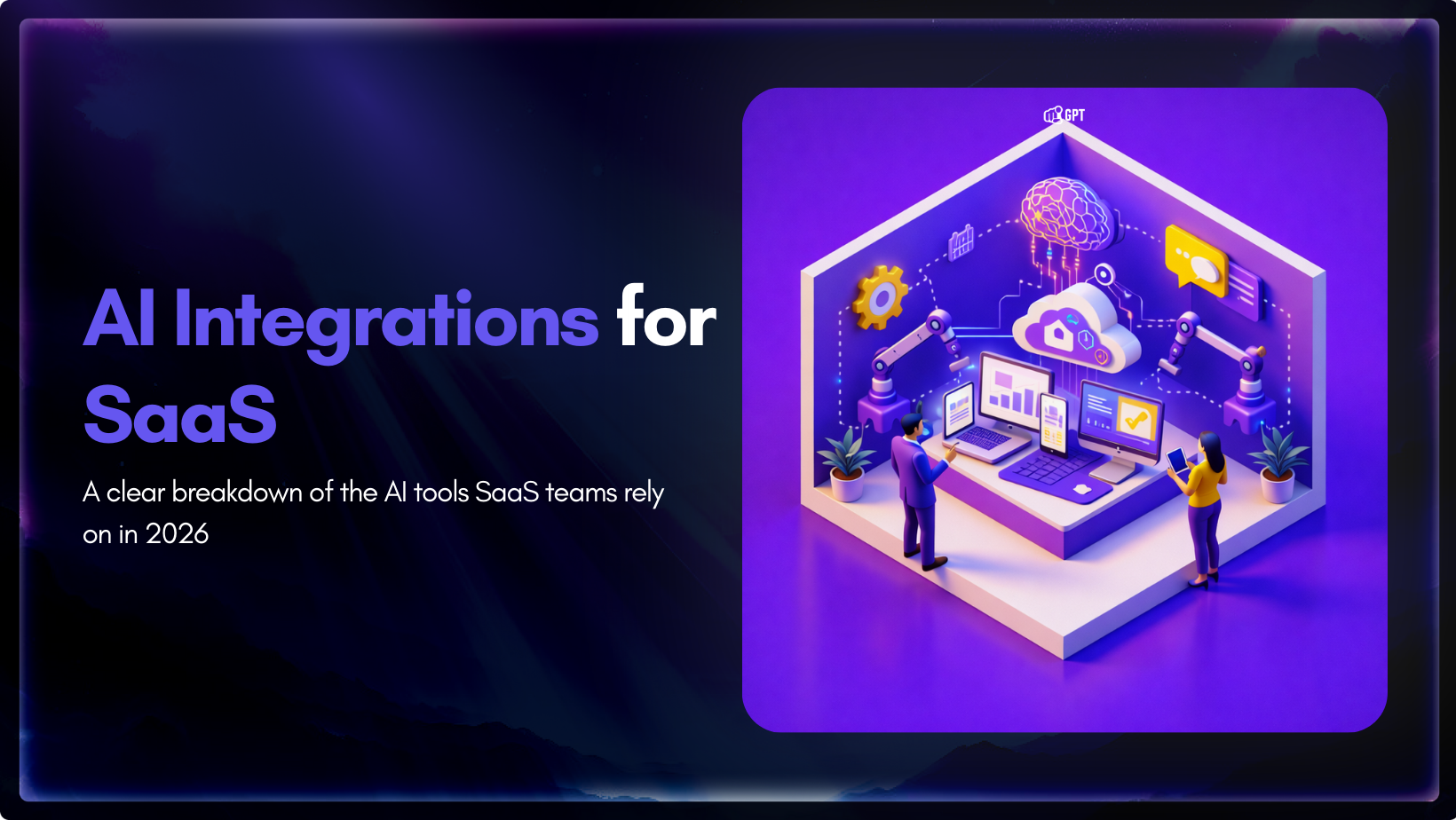
AI has become a core part of how modern SaaS products are built and delivered. In 2026, customers expect intelligent assistance to be available throughout their journey, from onboarding and everyday product usage to support and account management. Inside SaaS teams, AI is increasingly used to speed up workflows, reduce repetitive tasks, and improve how […]

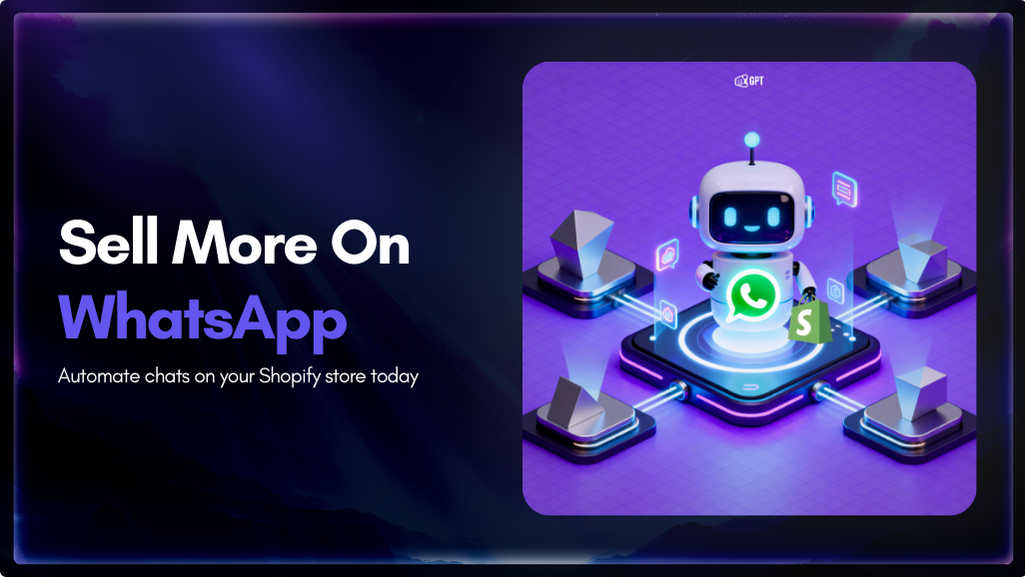
Shopify stores often use a chatbot on their website to handle product questions, order updates, and support. But customers also message on WhatsApp expecting the same quick answers. Most of them already use WhatsApp throughout the day, so reaching out there feels natural. A chatbot that works across both channels responds in seconds, guides purchase […]

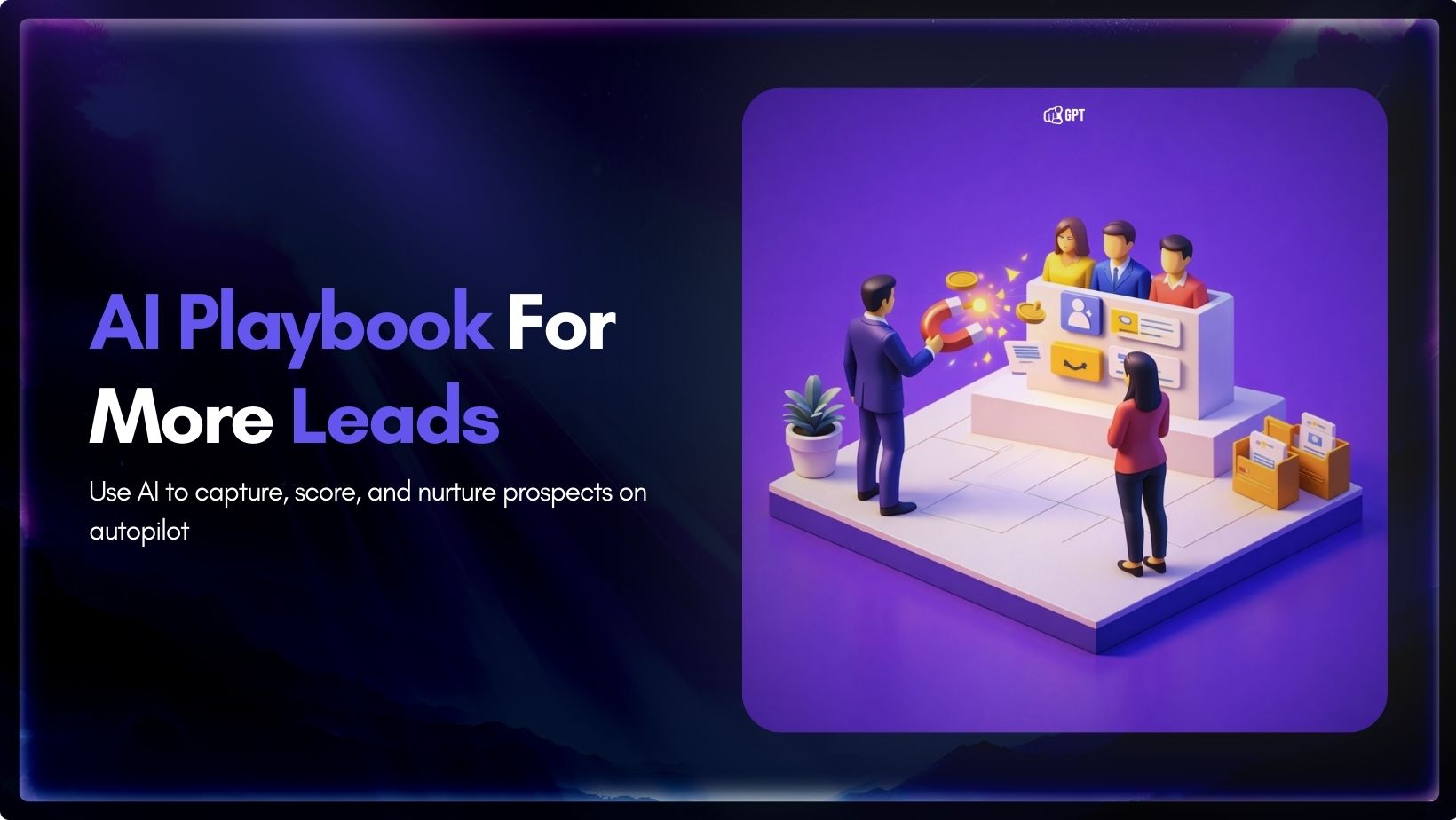
Most businesses do not struggle to generate leads. They struggle to know which ones are worth acting on. Forms get filled, DMs arrive, emails are opened, and chats happen across multiple tools. Some prospects convert. Most do not. The real problem is that there is no reliable way to tell, early enough, which signals actually […]

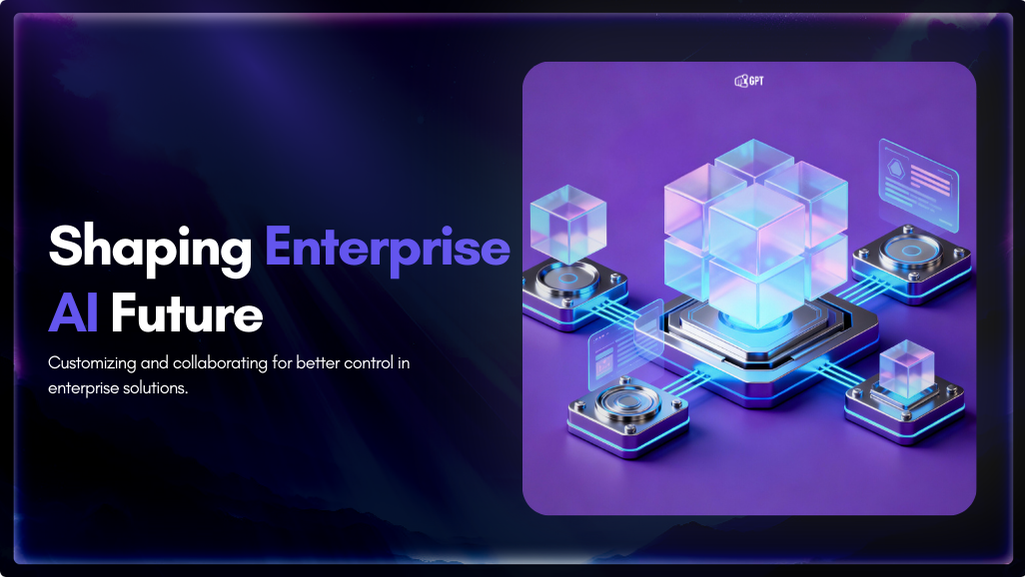
Artificial Intelligence has advanced quickly over the past five years, moving from an experiment to a standard component of modern business. AI has become a central part of enterprise strategy. 88% of organizations are now using AI. This figure has increased from 78% the year before. This transformation is reshaping how companies run, communicate, and […]
